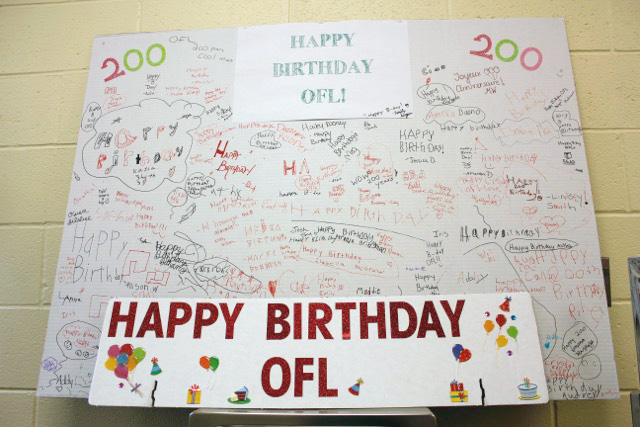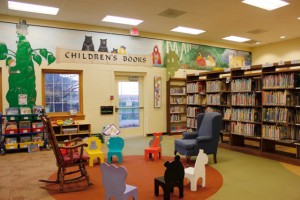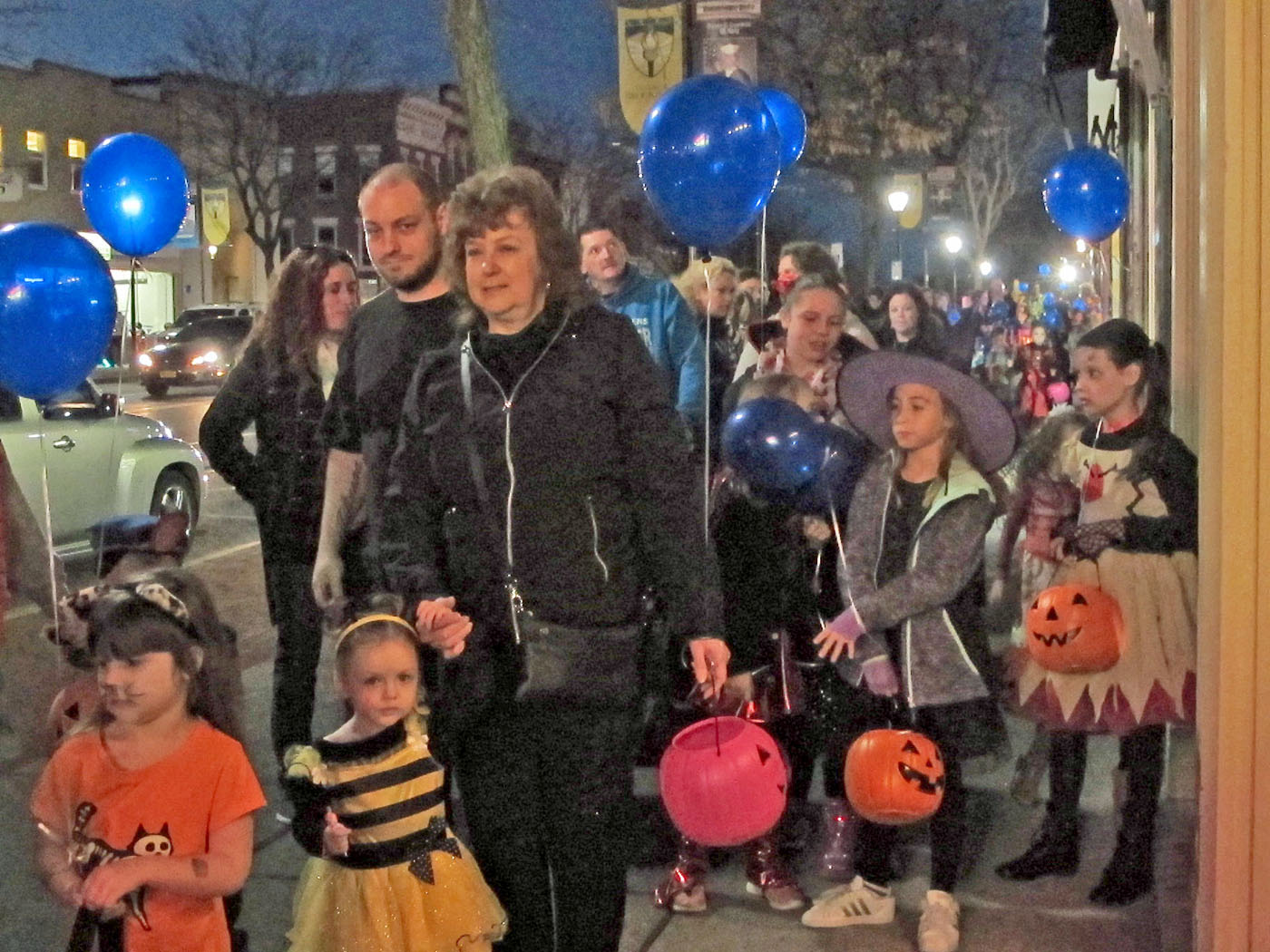Ogden Farmers’ Library – a history that speaks volumes

The year was 1815. A group of farmers cultivated a future as they formed the Ogden Farmers’ Library. This library became one of the founding organizations of the Ogden/Spencerport area. Only two community entities came before it, the first school in 1807 and the Congregational Church in 1811. This year notes the bicentennial of the library.
At that time in 1815, the library collection contained 100 original books and was housed at the home of George W. Willey, the first settler in Ogden Center. Windsor Stone Trowbridge (a familiar name to the Ogden-Spencerport area) was one of the original stockholders. David Rice, Ephraim Colby and Ephraim Colby, Jr., along with Abraham, Isaac, Timothy, Eastman, Zaccheus and Merrill Colby are also listed as men who were thought to be some of the founders. There are no official documents from that time due to a fire in 1876 that destroyed most of the library materials and records from that time.
A charter from 1910 notes that the library book numbered two contained the rules and regulations of the library. The document explains how the general return days were the first Tuesdays in February, May, August and November, much different than current day library return rules. The charter outlined the property of the Farmers’ Library Company with a share equally $2.00, the annual trustees election was held the first Tuesday in February.
Well-known author John T. Trowbridge (son of Windsor Stone Trowbridge) wrote a letter in 1902 for the Ogden Centennial, which noted, ‘With special satisfaction and lifelong gratitude I remember the circulating library kept in a store at the Center, at a time when books began to be of inestimable value to me. It must have been a small library indeed, but for me it held infinite riches in a little room.’
Trowbridge’s letter brought about thoughts of reorganizing the library. The Village Building was being built and plans to include a library were considered. A letter from Asa Wynkoop, the Head of the New York Libraries Section, noted a date when he would be traveling to the area and a request to meet with the trustees. During the meeting, Wynkoop outlined the assistance the state would give and the process of complying with those conditions set by the state.
Soon after the state granted the corporate name of Farmers’ Library Company and a free public library was established. Edwin Austin, Frank Webster, Horatio Burritt, Jabez Pierce, Foster Spencer were named as the first trustees of this corporation that was recorded in May 1908. In that same year, Harriet Moore was selected as librarian. Four years later, due to illness, Louise Wilcox and Grace Smith acted as temporary librarians who replaced Moore. Caroline Bush was chosen in 1913 as librarian. Mina Lapp followed Bush and Lapp served as librarian for 30 years.

Expanding the library’s services and collections
During this time of change for the library, the trustees were committed to growing the library’s collections. In June 1915 the library recorded over 2,500 books, and the total of volumes and magazines loaned was 13,839. It’s interesting to note, the 2012 Ogden Farmers’ Library Annual Report notes 148,980 items were borrowed.
Over time, the library became integral to community life. In the early 1930s, over 16,000 books were checked out by patrons, which proved the library’s importance to the community. Programs and services were changed to meet the needs of the community. A statement in the 1929 annual report notes, ‘We were disappointed in our children’s book week and entertainment. We did have a “Christmas Story Hour” on December 23 that was well attended by small children. Each child was given a story booklet as a gift at close.’ This was the beginning of children’s programming at Ogden Farmers’ Library.
December of 1948 brought disaster to the fire hall and village building. A fire ripped through these structures, which caused much damage to the library’s collections. Smoke and water created damage that was widespread throughout the library. The heat melted the bindings of much of the library’s collection. Due to this horrible loss, the library remained closed until October 1949.
Librarians in service
As in any time period – either present day or long ago – a librarian plays a key role in the operation of a library. The list of those who served as librarians is long and reflects many years of dedicated service. Lovilla Dimock became the first unofficial librarian in 1909; Harriet Moore served for two years following Dimock. Louise Wilcox, Grace Smith and Eunice Gridley all served until Wilcox was officially appointed for a short time in 1913. Caroline Bush acted as librarian until 1916. Mina Lapp’s tenure as librarian spans 30 years, and during this time she witnessed many changes. World War I, a United States population of over 100 million people, the Stock Market Crash, World War II and attack on Pearl Harbor, and all of these turbulent times impacted the Ogden Farmers’ Library.
The 1920s saw dramatic swings in the number of books loaned, totals sometimes fluctuating dramatically – proof that this time in the country was filled with many changes. The annual report filed in 1946 noted $1,000 as Lapp’s salary. The Library Board of Trustees petitioned the Town of Ogden with a letter seeking to increase the salary to $1,200 to hire a replacement for Lapp.
Marion Carpenter was subsequently hired as librarian and filled this roll until another fire in 1948 closed the library for almost one year. Adelaide Stewart came on board in 1949 and served until her untimely death in 1967. Louise Campbell, who served for one year, replaced Stewart. Margaret Stevenson followed Campbell and served as the main librarian for 26 years. It was during Stevenson’s leadership that the library underwent another dramatic change, a move to a new facility.
A new space for a new era
An article published in the Suburban News dated July 21, 1976, described the library’s dedication at its new location at 14 Amity Street. This two-story facility offered patrons more than 18,000 books and other materials for loan including records, sculptures, framed prints, periodicals, films and cassettes. The staff included Stevenson, Ann Curtis, Jeannette Elliott, Sherrie Burris and Carol Kinnaman.
At this time, a community group called the Friends of the Library was formed to support the library and assist with library activities. The Friends of the Ogden Farmers’ Library still exists but with a broader scope of support including fundraising.
Mary Anderson is the president of the Friends of the Ogden Farmers’ Library. “We support the library in so many ways, such as fundraising for equipment and volunteer support, and also what we call ‘friend raising.’ Our goal is to strengthen the library’s programs and services and provide the best service possible.” The Friends of the OFL group also provides scholarships to students who have volunteered at the library and are pursuing higher education.
During the 1970s and 1980s, library programming was expanded to include craft demonstrations, lunchtime book reviews and discussions as well as even nature walks. Programming evolved for children and included film festivals, visiting artists, and story hours with Rosalind Krebs. (This kind lady will forever be remembered as a favorite with this writer.)
“Many of the programs that were started back in the 1970s are still offered today. Our reading programs are still very popular. When I started in 1982, we knew all of our library patrons and it’s still the same in 2015,” said Doreen Castano, retired library clerk and now director of the Spencerport Depot and Canal Museum.
Judy Jennejahn became head librarian in 1980; Annette Von Dohlen followed her in 1984 and she served for 16 years.
In 1989, an evolution into the world of technology brought the Ogden Farmers’ Library into the new era with a newly automated circulation system.
A location change readies the library for growth
1992 brought a location change as the library found its current space at 269 Ogden Center Road. This new location offered opportunities for the library to grow and provided space to update the library’s collections as well as room to create children’s and young adult areas.
Patty Uttaro stepped in to replace Von Dohlen in 1999. Uttaro, along with a dedicated group of community members, came together with a mission to restore a 1908 railroad depot for the purpose of a visitor’s center, museum and satellite library. In May 2005 the depot was moved to its location on the banks of the Erie Canal in Spencerport. It opened to the public in September of 2007. The Spencerport Depot and Canal Museum now serves as a vital resource to the Spencerport and Ogden communities as a museum, lending library and stopping place for boaters and travelers.
Uttaro remembers: “Mary Gerew, a devoted library volunteer, and lifelong resident of Spencerport, asked to meet with me along with a few friends, Bud Nichols and Bernie Cubitt. They had a dream of restoring the old depot to the Village. Maxine Davison, a well-known philanthropist, wanted to donate the building to the Village, but only if it could be used as a museum. These folks asked me for help in organizing their efforts to get the depot moved. I took on the role of general supporter and fundraiser, while Bud and Bernie recruited volunteers to help with moving the depot,” Uttaro explained. “We raised more than $35,000 in about 10 months to help pay for the construction and moving. I wrote and received a New York State Library Construction grant, which helped furnish the finished depot. The interior of the Depot resembles the Ogden Farmers’ Library as it looked in 1908.”
Uttaro felt a great sense of community and accomplishment working on the Depot project.
“The enthusiasm from the volunteers, especially Bud and Bernie, was remarkable. Their knowledge of Spencerport history and their love for the community was something I have not encountered since. Also, the opportunity to create a unique destination point in Spencerport was so appealing,” Uttaro said.
Over the next six years, Kay Dennett, Jennifer Magee and Sue Swanton all followed Uttaro. Since 2013, John Cohen has served as director. Since its early beginnings in 1815, the library has now become a cornerstone for the community. Programs and services have grown to appeal to library patrons of all ages.
“The library has become more than just a collections of books. We are a resource for the community and programming is a mainstay of what we offer. Our programming has a broad scope of offerings from genealogy to gardening to specific community interests. Our reading programs are well attended, and range from pre-school through adult. The intent of these programs are to foster life-long love of reading,” Cohen explained.
Celebrating the milestone
This bicentennial year was celebrated with a host of events and activities including filling a time capsule that was buried in the Children’s Garden.
Cohen collected items from community groups to note their contributions or significance to the Spencerport/Ogden area.
“We kicked off the year with a birthday party in January where our staff and volunteers gave a presentation highlighting important events that occurred over the year. We held a contest in February. We invited the community to write an essay explaining why they love Ogden Farmers’ Library,” Cohen said. “A time capsule was filled with items from the library and community as well as a letter to the future noting the important events of 2015. This capsule is buried in the Children’s Garden outside the library.”
What does the next 200 years hold for the Ogden Farmers’ Library?
Castano noted how the library continues to be a vital resource for the community.
“When I retired 15 years ago, we were seeing second and third generation children and families visiting and borrowing library books and taking part in programming. This proved the importance and value of our library.”
Note: The Ogden Farmer’s Library’s Annual Reports contain pages and pages of anecdotal information written by librarians that gives a first person explanation of the accounts of that time period and were used to assist in writing this article.
For other information about the Ogden Farmers’ Library, visit ogdenlibrary.com and visit spencerportdepot.com to learn more about the Spencerport Depot and Canal Museum.



